Snow Goggles Item Number: E2167-0 from the National Museum of Natural History
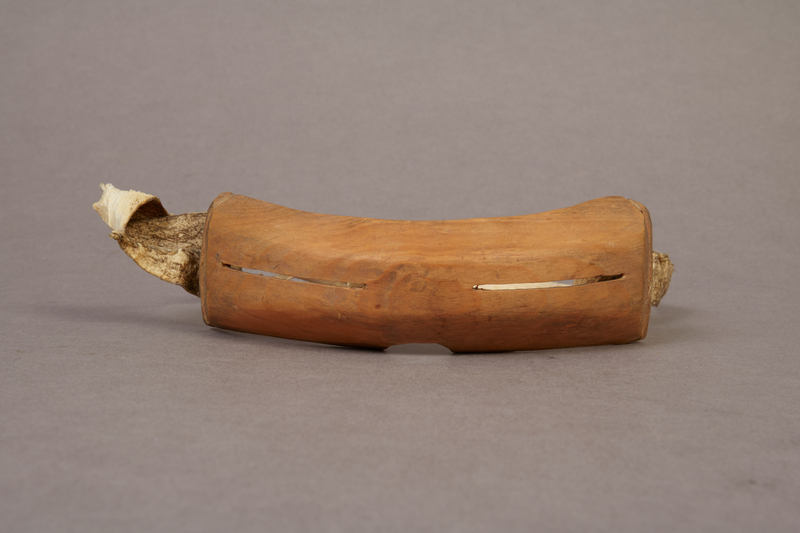
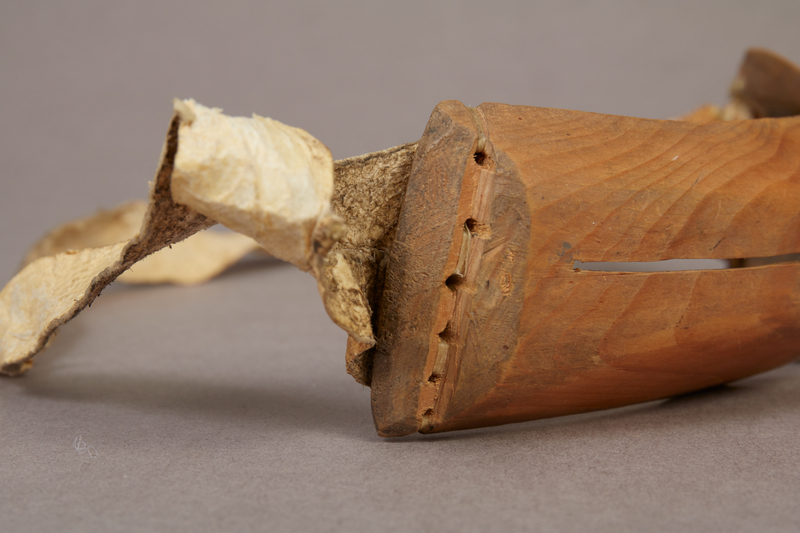
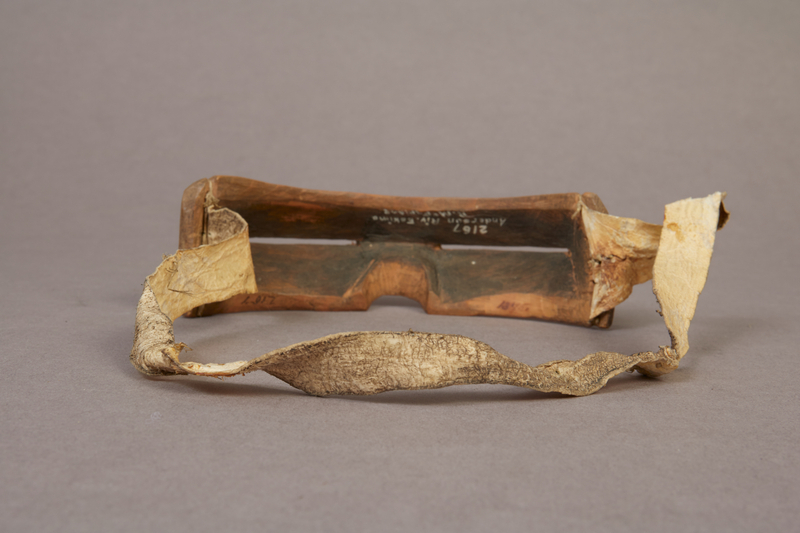
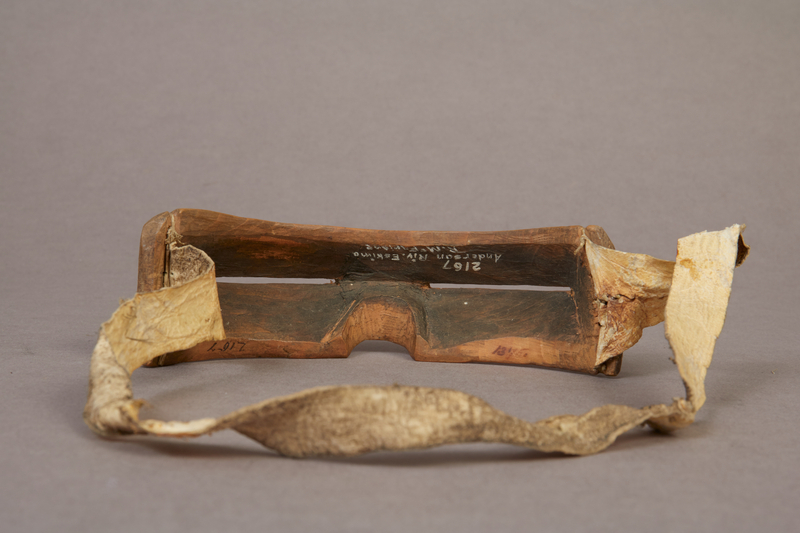
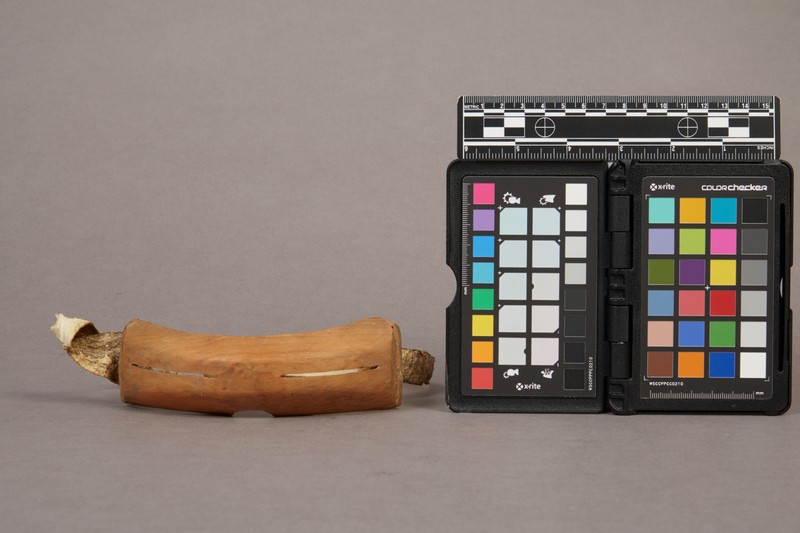
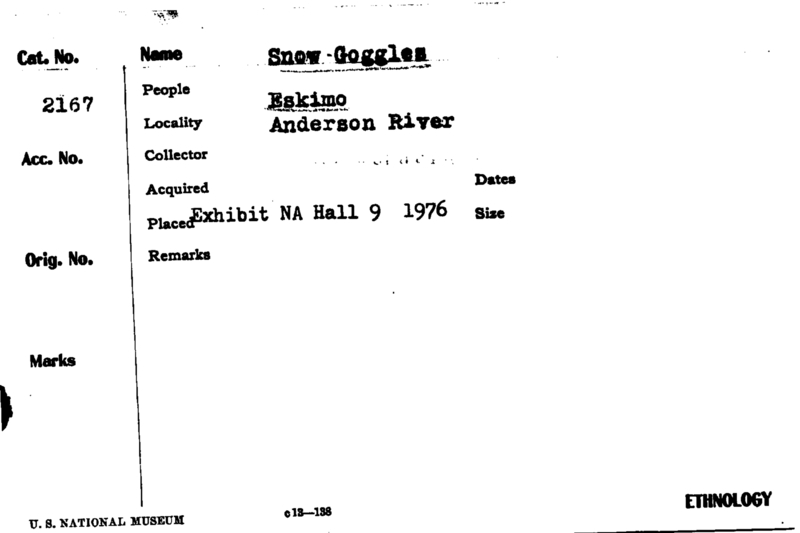
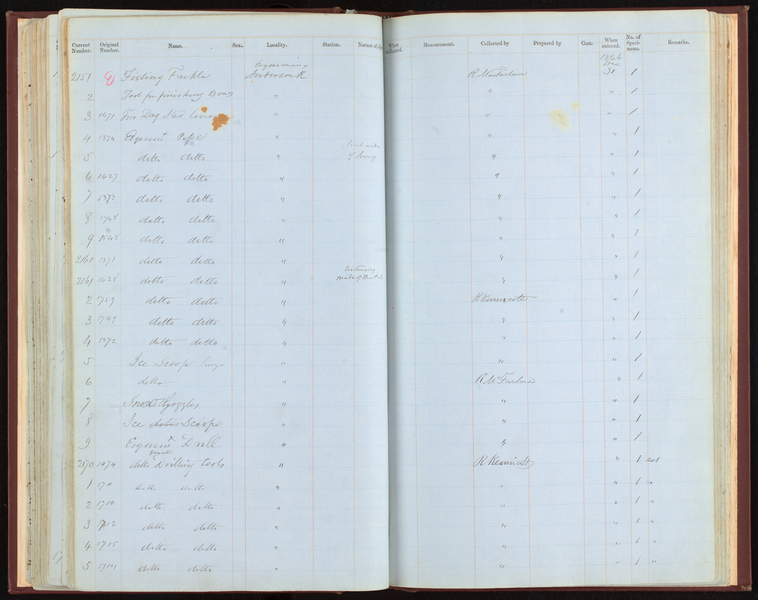
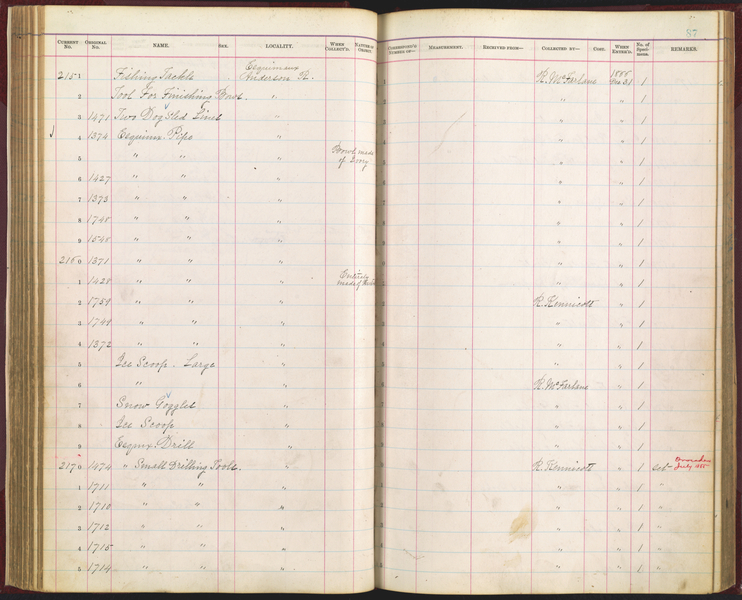
Notes
FROM CONDITION REPORT FOR HALL 9 TAKEDOWN (C. VALENTOUR 3/98): "2167 ANDERSON RIVER ESKIMO R. MCFARLAND WRITTEN IN INTERIOR. CARVED PIECE OF WOOD W/ NOSE DEPRESSION, EYESLITS. EACH SIDE GROOVED W/ 6 PERFORATIONS USED TO ATTACH LENGTH OF BUCKSKIN JOINED W/ SINEWS TO GOGGLES. INTERIOR OF GOGGLES PAINTED BLACK."Source of the information below: Inuvialuit Pitqusiit Inuuniarutait: Inuvialuit Living History, The MacFarlane Collection website, by the Inuvialuit Cultural Resource Centre (ICRC), Inuvik, N.W.T., Canada (website credits here http://www.inuvialuitlivinghistory.ca/posts/12 ), entry on this artifact http://www.inuvialuitlivinghistory.ca/items/176 , retrieved 12-31-2019: Snow goggles carved from a single piece of wood. They are deeply indented on the inside, with narrow horizontal slits. The indented area has been blackened to further reduce the glare of sunlight. A deep rounded notch for fitting over the nose has been cut into the lower edge in the middle, and there is a shallower notch in the same location on the upper edge. Shallow grooves have been cut at each end, where a hide strap is attached through shallow grooves cut into each side of the goggles. More information here: http://www.inuvialuitlivinghistory.ca/item_types/52: Snow goggles protect the eyes from bright sunlight reflected from snow and ice which can burn the retinas and result in snow blindness. Similar to squinting, the narrow horizontal slits in the snow goggles allow only a small amount of sunlight to reach the eyes but still allow the person wearing them to see.
Item History
- Made in Northwest Territories, Canada
- Collected in Northwest Territories, Canada
- Received from Roderick R. MacFarlane on December 21, 1866
What
- Name
- Snow Goggles
- Identification Number
- E2167-0
- Type of Item
- goggle
Who
- Culture
- Eskimo, Inuit and Inuvialuk
- Received from
- Roderick R. MacFarlane
Where
- Holding Institution
- National Museum of Natural History
- Made in
- Northwest Territories, Canada
- Collected in
- Northwest Territories, Canada
When
- Acquisition Date
- on December 21, 1866
Other
- Accession Number
- 66A00090